51 F. average high for April 3.
56 F. high temperature a year ago, on April 3, 2011.
.46" rain fell Monday night - reports of pea to marble-size hail southern/eastern suburbs of the Twin Cities.
March 9: last time the mercury dipped below freezing in the Twin Cities (15 F.).
April 10: good chance of a frost for the suburbs next Tuesday morning.
+1.7 F. The March average temperature in the Twin Cities was nearly 2 F. warmer than the average temperature for April.
35 to 1. March record highs outpaced March record lows by a mind-numbing ratio of 35 to 1 across North America.
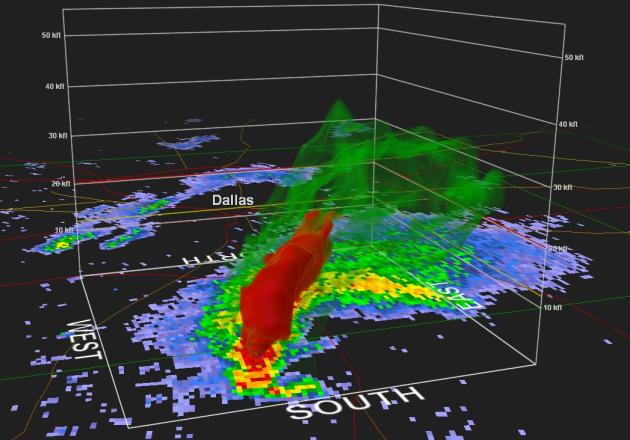
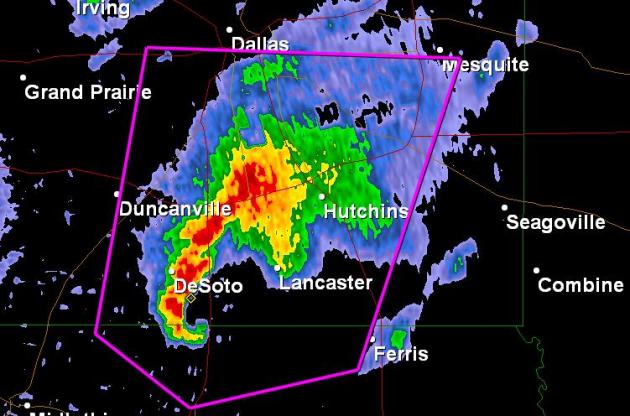
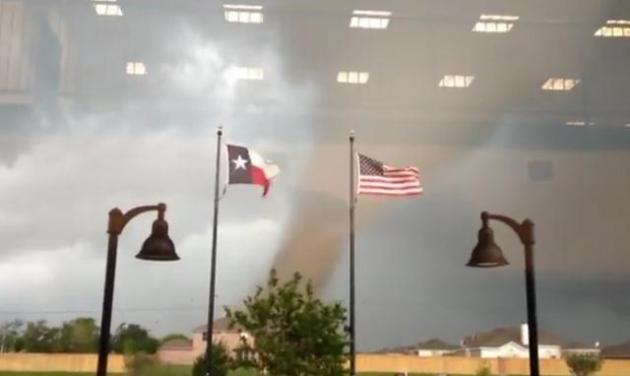






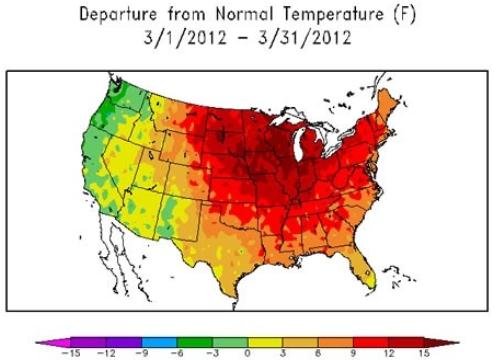
Minneapolis, Minnesota: The March average temperature was 15.5 degrees above normal and 1.7 degrees above the April normal. It had its earliest 80 degree temperature on record and the most 70 degree days on record for the month. (Sources: Updraft - Minnesota Public Radio and Paul Douglas)
Chicago, Illinois: Its record warm March (by 15.6 degrees) would have been the 7th warmest April on record (Source: Capital Climate). It tied or broke record high temperatures on 9 straight days.
Des Moines, Iowa: From the National Weather Service - Last month was by far the warmest March on record. The average temperature of 55.7 bested the old record of 51.5 (set in 1910) by fully 4.2 degrees. This is the widest margin by which a monthly temperature record has ever been broken at Des Moines."
Map credit above: "Temperatures compared to normal across the Lower 48 states during March, 2012. (Great Plains Regional Climate Center). Courtesy: Washington Post."

March Heat Wave Reason For Panic Buying? Here's an excerpt of a story at The Huffington Post: "When the tiniest bit of snow hits Washington, DC, area grocery stores can suddenly find their shelves (especially milk... ) depleted with the hordes of panic buyers terrified of being caught without the liquid for their morning cereal. Amid March Madness, with "mind-boggling" high temperature records outpacing low temperature records more about 35 to 1 in North America (with many 'low temperatures' exceeding the previous high temperature records -- note, over time, these should roughly balance out... but, with a warming climate, they're not), one has to wonder when people might start hoarding agricultural products damaged by this climate change driven global weirding."
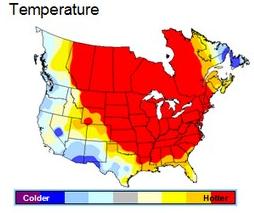

"Over 7,500 daily high temperature records were set, making this the warmest March in over 50 years across North America, and one of the warmest ever recorded. Precipitation was the least since 2005, although severe weather was abundant. In the U.S., March 2012 was the warmest in over 50 years and driest since 2009, although wetter than normal. Canada experienced its 4th warmest March in 50 years and was driest since 2006.
Significant Weather Events:
- In the U.S., all 5 weeks of the month were warmer than last year and warmer than normal. In Canada, all weeks of the month trended warmer than last year.
- More than 7,500 daily record high temperatures were set this month in the U.S., with over 500 locations setting all-time record highs for the month of March.
- Many markets in the Great Lakes set daily records with up to +40F above normal temperatures, and shattered records by +20F. Chicago set high temperature records for 9 straight days. Both Chicago and Minneapolis hit 80F earlier in the calendar year than Las Vegas.
- During the first week of the month, the U.S. recorded the largest outbreak of tornados ever in the month of March with over 150 reports, including devastating storms in Kentucky and Illinois.
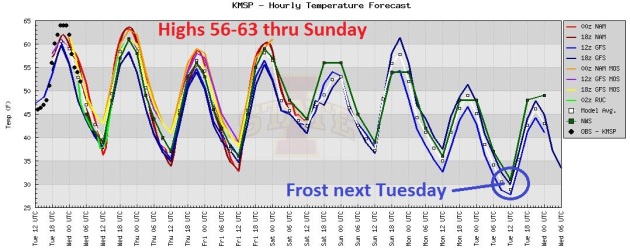
Quiet, Seasonably Mild Week. No more 70s and 80s in sight for a few week - we'll just have to be content with temperatures a mere 10 degrees above average. Highs reach the upper 50s and low 60s into Sunday, then cool down early next week - the best chance of frost for the suburbs Tuesday morning.
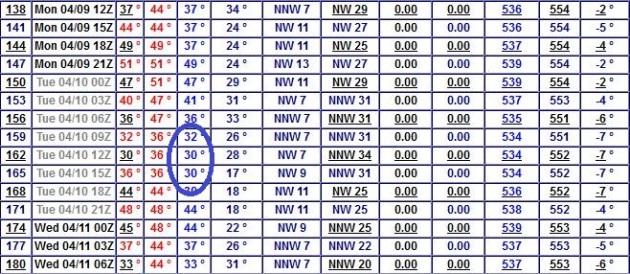
Keep Your Light Jacket Handy. I wouldn't exactly call this a cold front, but the second week of April will bring a few days with highs in the 50s, nighttime lows dipping to frosty levels - the best chance of frost next Tuesday morning. I don't think we'll see a widespread freeze in the metro, but some sprouting blooms may freeze their buds off next Tuesday.
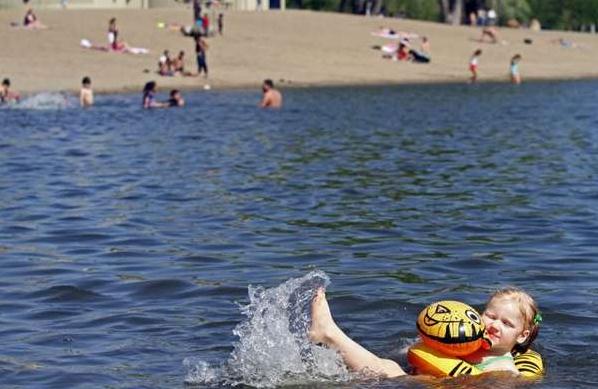
Weather An Early Bonus For The Bait Business. Details from The Des Moines Register: "Hendrix said the bait business normally doesn’t pick up like this until late April. “The business today makes you believe that we’re into late May, early June,” he said. “It’s just phenomenal.” Des Moines’ Sunday high of 86 was just shy of a record. Most of northwestern Iowa was in the low 90s, with Sioux City peaking at 93."
Photo credit above: Justin Hayworth/The Register

Great Lakes Icecover Down 71% Since 1973. Here's an excerpt from another amazing post from Dr. Jeff Masters at Weather Underground: "Ice cover on North America's Great Lakes--Superior, Michigan, Huron, Ontario, and Erie--has declined 71% since 1973, says a new study published in the Journal of Climate by researchers at NOAA's Great Lakes Environmental Research Laboratory. The biggest loser of ice during the 1973 - 2010 time period was Lake Ontario, which saw an 88% decline in ice cover. During the same time period, Superior lost 79% of its ice, Michigan lost 77%, Huron lost 62%, and Erie lost 50%. The loss of ice is due to warming of the lake waters."
Photo credit above: "A tale of two winters: Lake Superior was choked with ice at the end of the winter of 2008 - 2009 (top), but was virtually ice-free at the end of the winter of 2011 - 2012 (bottom.) Image credit: NASA."
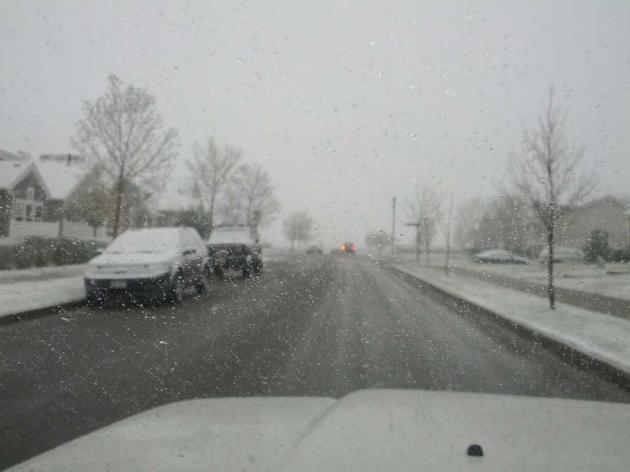
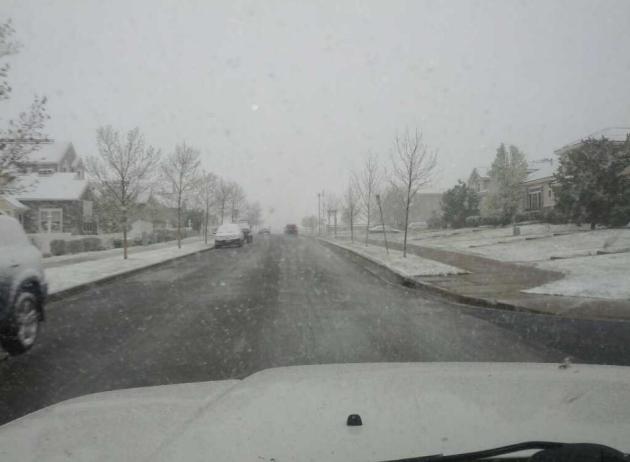
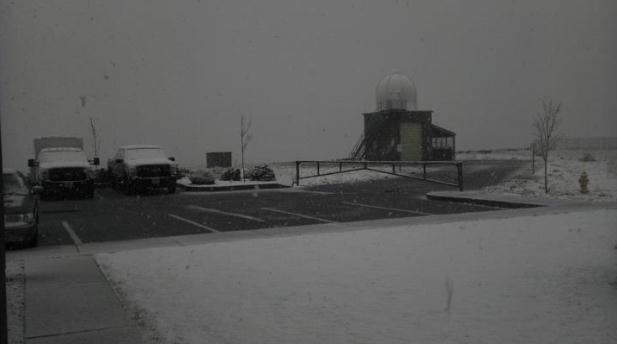
New Mexico Slush. From the Albuquerque, New Mexico office of the National Weather Service: "Heavy wet snow at NWS office this morning. 1.1″ so far mostly on grassy surfaces. A record high of 81 was recorded on April 3rd. Spring in the high desert!"

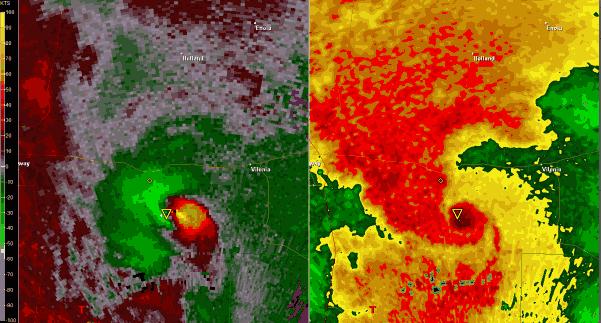
Harsh Storm Warnings Should Help. This story picks up on the test (in 5 cities) to use more urgent wording in tornado warnings - to try to encourage people suffering from "tornado fatigue" to do the right thing. The Dekalk County (Illinois) Times-Journal has a timely Op-Ed: "As Hurricane Katrina took aim at the Gulf Coast, the National Weather Service issued a frightening warning about what was about to hit the New Orleans area. In the special bulletin on the morning before landfall, the “urgent” message noted that after the storm, most of the area would be uninhabitable for weeks and predicted that wood-framed low-rise apartments would be destroyed. Power outages would last for weeks. Warnings like that will be issued for tornadoes in the coming months in Missouri and Kansas as part of a pilot program."

Photo credit: "Francisco Bernal sits in front of what used to be his home inside the Pink Citrus Mobile Home Park on Sunday afternoon. Bernal is one of about 500 people in the park, located on Pine Island, Fla., whose home was damaged or destroyed during Hurricane Charley on Friday. As of Sunday the residents of Pine Island hadn't received help from any government agency."
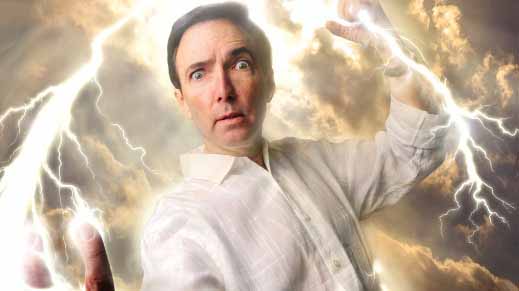
"How many inches fell at the Minneapolis airport on April 3nd? (Storm started around midnight on April 2nd)
Thanks!"
Lori Underwood, Ameriprise Financial
Lori- it was .46" of rain at MSP Interntional Airport; St. Paul picked up a third of an inch. Our drought continues to deepen. Given a choice between drought or tornadoes it would be a tough call. A statewide drought would be far more expensive, impacting all of us - a wet/severe spring/summer would affect a far smaller percentage of Minnesota.


Bloomberg And Reuters: The Future Of News. Adweek.com has an interesting story about how these 2 (impressive) news organizations are challenging the New York Times of the world. Here's an excerpt: "There’s no mistaking where Andy Lack feels Bloomberg LP is positioned versus its competitors. “We may be the last man standing,” says Lack, who oversees the news organization’s multimedia operations. A veteran of network television, Lack sits in his small office in Bloomberg’s gleaming New York headquarters, which is stocked with signs of the company’s largesse: expensive artwork, oversized fish tanks, a state-of-the-art TV studio. “Most of the other news organizations I’ve worked at are fighting the delusion factor,” says the former news executive for both CBS and NBC. “There’s enormous pressure of economics on journalism. It’s an expensive, tough game to be in.”




Photo credit above: "NASA's stunning Perpetual Ocean animation visualizes ocean currents (Image: NASA/Goddard Space Flight Center)."
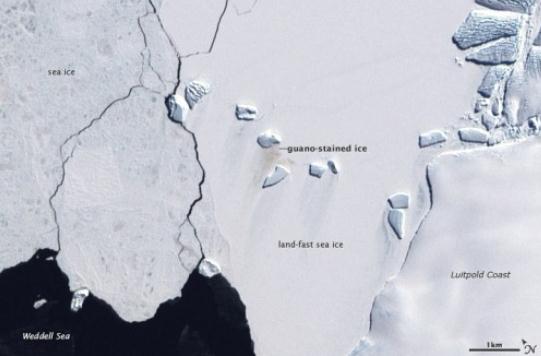
Penguin Poo From Space. Finally - a satellite image I can relate to. Neatorama.com has the stinky details: "Hey, humans. Yes, you. Get your act together. You’ve been outdone by penguins of all creatures. NASA’s Landsat 7 satellite spotted the fecal evidence of a penguin colony on Antarctica from space. And what have you done with your life lately? Show some ambition."


Gray Start - Fine Finish. It was nice hearing "rain" falling on the rooftop Monday night, about a half an inch for the immediate metro, but over 1" at Eau Claire, Wisconsin. Tuesday highs ranged from 62 at Alexandria to 64 St. Cloud and the Twin Cities, 66 at Redwood Falls.
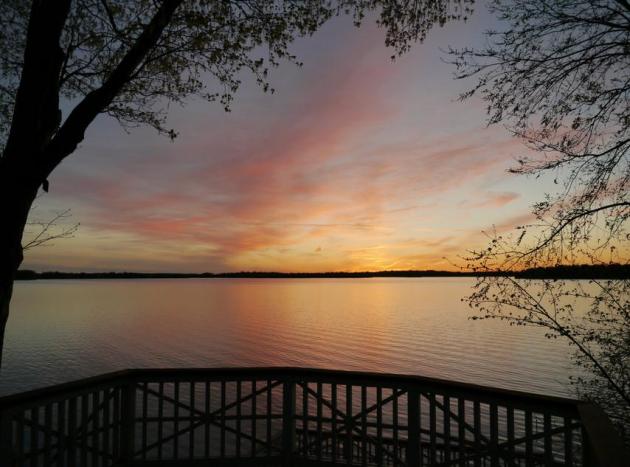
Paul's Conservation Minnesota Outlook for the Twin Cities and all of Minnesota:
TODAY: Bright sun, cool breeze. Winds: E/NE 8-13. Low: 39. High: 61
WEDNESDAY NIGHT: Clear and chilly. Frost possible over central/northern Minnesota. Low: 39 (downtowns)
THURSDAY: Partly to mostly sunny. Quiet weather spell. Low: 40. High: 59
FRIDAY: Blue sky, milder breeze. Still dry. Low: 39. High: 63
SATURDAY: Passing shower. Most of day dry. Low: 45. High: near 60
SUNDAY: Clearing, breezy, turning cooler. Low: 38. High: 57
MONDAY: Frost north/central, plenty of cool sun. Low: 36. High: near 50
TUESDAY: Metro frost likely. Bright sun. Low: 31. High: 52
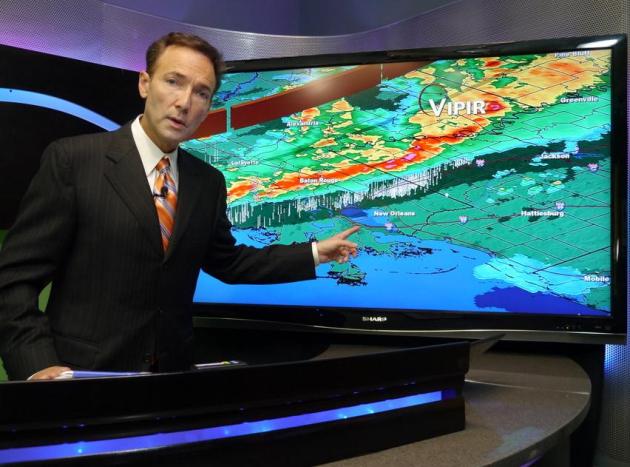
"Tornado Fatigue"
It may be a fluke or a trend in the making, but more (large, violent, long-lasting) tornadoes are touching down east of the Mississippi. "Dixie Alley" has become a target; last year Alabama saw far more tornadoes than Texas.
That's a problem. Eastern tornadoes are harder to track (haze, hills, highways not conducive to chasing), and because of bedrock many people don't have basements.
Doppler can detect spinning T-storms; but we still can't tell if a rotating "supercell" will go on to spark a relatively minor EF-1 tornado, or an EF-4 monster. Knowing the surrounding environment helps - but if the NWS downplays rotation and a huge, half-mile-wide tornado results, that's a problem. A big problem. Vigorous rotations means warnings are issued, but the false alarm rate is still over 70 percent. "Why are you interrupting "Dancing With The Stars!" A sense of apathy ensues. "Why are you crying wolf?" So when The Big One does form, people hesitate - they wait for multiple confirmations before running to the basement. Truth: we're not as good as we think we are.
A quiet week gives way to Saturday showers. Your begonias are in grave peril. Frost is very possible early next week. That old adage "wait 'til Mother's Day" is true.

Public Doctrine Lawsuit Asks For Protection Of Atmosphere As A Public Resource. Here's an eye-opening story from Mother Nature Network and The Huffington Post: "If you enjoy public beaches, state parks or fishing piers, you can thank the sixth-century Roman emperor Justinian. He's credited with introducing the public trust doctrine, a legal concept that forbids private ownership of certain natural resources, instead preserving them for public use. This idea has spread worldwide since then, protecting everything from beaches and streams to oyster beds and fish stocks. It was an early tenet of English common law, later encoded in the Magna Carta, and also has a long history in U.S. courts, dating back to at least 1842's Martin v. Waddell. During a 1983 case about water use at California's Mono Lake, the U.S. Supreme Court specifically quoted this section of Roman law to explain public trust:
"By the law of nature these things are common to mankind: the air, running water, the sea and consequently the shores of the sea." -- Justinian Code of Rome, c. 534."
Matternhorn Disintegrating In The Face Of Global Warming. An excerpt from a story in the U.K. Independent: "With its four steep faces reflecting the compass points, the mighty Matterhorn has proven an irresistible and often deadly challenge to mountaineers. But now, the mountain – one of Europe's tallest and most celebrated peaks – is falling to bits due to climate change, according to a new scientific report. As with other Alpine mountains, experts have already documented the retreat of the peak's glaciers and the thinning of its permafrost in the wake of rising temperatures. But scientists now say they have evidence that these rising temperatures are also prompting the physical disintegration of the mountain itself."

30 Year Old Global Temperature Predictions Close To Spot On. An excerpt of a story from The Register: "In the ongoing debate over climate change, it's at times a good idea to check in with historial predictions made by climate modelers and see how well they have been able to predict global warming – which is exactly what a pair of researchers at the Koninklijk Nederlands Meteorologisch Instituut (KNMI) have done. Geert Jan van Oldenborgh and Rein Haarsma "stumbled across" – their words – a paper in the August 28, 1981 issue of Science, written by a septet of climate modelers, which modeled a number of scenarios that projected global mean temperatures up to the year 2100. The lead author of that paper, "Climate Impact of Increasing Atmospheric Carbon Dioxide", was the now-famed and/or now-reviled James Hansen, currently working at NASA's Goddard Institute for Space Studies (GISS)."



Photo credit above: Margriet Faber/AP.
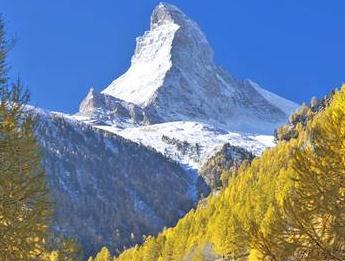
No comments:
Post a Comment